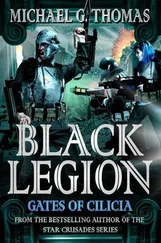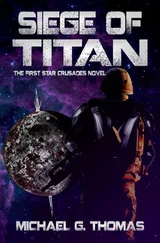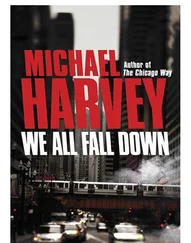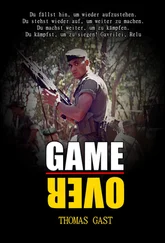He shivered up there and made me remember that I hadn’t dropped him. He was still on my shoulders, groggy, sick, and cold, but alive. I skated over the sidewalk, to move quickly, but so as not to jar them too much. When we got back to the parking lot I put them in the front, cleaned and dressed them and scoured the back of the car. X wasn’t quite two yet so I had to smuggle him into the hospital in a duffle bag. He loved the idea, and even though he was still feeling a bit wretched, he giggled when I beeped his nose through the unzipped opening and shushed him.
He trembled in the bag on the way in, trying to suppress his laughter, but we made it in. I unpacked him in the bathroom and he jumped out of the bag as though the adventure had righted him — C, too. Neither boy could stop grinning or shuffle-dancing, bumping into each other, grasping at imaginary things in the air.
Maybe I only tricked myself, that they’d been magically restored to health because it wasn’t such a great idea — bringing two infectious children to visit a convalescing mother and child, but it had been a hard week for everyone. The boys had never spent time away from their mom. And I’d been traveling back and forth from Brooklyn to Washington Heights. There’d been a lot of dragging hours filled with anxiety, even dread. A lot of pain and blood. And when you were finally born you were so small that I could hold you in one hand — dusky, bald, struggling for breath. They took you away immediately. I had to let them. I had to let you go.
I close the notebook. It’s the best I can do. I put it back in my bag. Where is the moon? It should be high up in the eastern sky, way above the courthouse, but it’s nowhere to be found — no stars either, just overstretched clouds, purple-gray and static. They seem, at first, to be translucent, but I don’t know — the glow — perhaps they’re reflective instead, weakly returning the city’s residual light. They look dry, but there must be moisture in them. It’s not raining anymore but the air is thick and damp. Occasional drops randomly fall from above like tepid drips from sweaty cellar pipes. I don’t know why I’ve stopped here — Foley Square. It smells like fish — old fish, dead fish, washed up, or floating, lost under the shadows of the bridges. The scent comes up on the wind from the south and seems to stop and swirl around the square. It’s a strange little place. I’ve only driven or run past it. It’s a narrow diamond — Worth Street to the north; Center and Federal Plaza run along the east and west and join at the southern tip. At the top, next to Worth, is Thomas Paine Park, an empty gesture at a fenced-in green space.
At my feet is a directional star — with thin strips of brass inlaid to accentuate the line — at the center of which is a large circle. The first clauses of the Constitution follow the arc along the inside. And inside that circle are strange engraved scenes of British persecuting Americans, as well as Americans persecuting Americans — early patriots, lynched slaves, burned witches — some vague apology of sorts, I don’t know. This is an African burial ground — both free and enslaved — four hundred or more, under the tarmac, under the massive footings of the official buildings in which are engraved grave maxims: THE ADMINISTRATION OF JUSTICE IS THE FIRMEST PILLAR OF GOOD GOVERNMENT. It seems almost too sad to even attempt to offer commentary on the absurd conglomeration: Dead blacks honored in swamps claimed by Indian, then Dutch, then English, then Irish, all in the shadow of a soot-stained alabaster Greco-Roman monolith.
One of the points of the star is a path that leads to the center of the square. In fact, there are several paths that lead there — like a miniature of the Place d’Etoile. Perhaps that’s too grand — or not even close. These paths are rose-colored granite, edged by gray, in the midst of lilacy-gray hexagonal pavers. The colors and patterns create the opposite of what I imagine to be the desired effect — they stop and push you out, make you focus on the garishness and want to leave. If you don’t, if you hang on, you’ll see the giant sculpture in the middle of the square. Two steps up — it begins with a polished black granite pool, rolled at the edges, making it look like an enormous ashtray. It’s half filled with water. The spray and the caged lights are off for some reason. There’s less change than you’d think — or perhaps more when you consider the easy access. But to me, the scale and the still water make it seem unreceptive to wishes.
An elongated, narrow trapezoid, like a heavy footbridge, spans the water from east to west. Atop it is an abstract sculpture. From far away you almost miss it — dwarfed by the official buildings. Up close, it dwarfs you. It’s at least fifty feet tall and resembles, at first, a sword with an elaborate and asymmetric hilt, pointing skyward. If you step back and circle the pool, it looks more like a phallus, then a dead tongue of flame, or perhaps the marker the fire has left in space — black, solid, unlit — pointing up to the strange, double-layered purple sky, up to the faithless lights, defacto vacuums. A symbol, perhaps, of a debt either owed or paid or still disputed, like a lone protester, vigilant outside the courthouse.
I’ve read about it — three hundred tons of black granite — a memorial to the displaced dead. If you came this way, moving slowly, on foot, with time to spare, and followed the curve of the pool around the south side, you’d eventually see the large stone marker, which the heavy path across the pools abuts. There are words carved into it. “Commissioned by the city . .” Then the words of the sculptor himself — a chiseled disclaimer yanking it from the abstract: “The Chi Wara rests on a horizontal plane which symbolizes the canoes used by the Native Americans, the slave vessels that transported African men, women and children and the passenger ships that brought immigrants to this country. The part of the granite these words are inscribed in represents the land.” Six years and three hundred tons of granite later he still wants to tell me exactly what it is. I give up.
If you come this way and leave the absolutely defined sign behind, resist the urge to look at the enormous structure that is One Centre Street, not consider the concrete barricades positioned on the sidewalk to discourage vans traveling toward the walls at ramming speed in an attempt to blow the whole thing down, you’ll see that the rats use the gutter like an expressway, scampering to and from the grease spots left behind from the vending carts that line the sidewalk during the day. The way the cars dismounting the bridge seem to want you to stray off the curb and step into the end of their blind turn. The bush, the flower patch, the bench, and the plaque:
When the perfected bridge shall permanently and uninterruptedly connect the cities of New York and Brooklyn, the daily thousands who cross it will consider it a sort of natural and inevitable phenomenon, such as the rising and setting of the sun. When they will unconsciously overlook the difficulties surmounted before the structure spans the stream and will perhaps undervalue the indomitable courage, absolute faith, the consummate genius which assured the engineer’s triumph.
— Thomas Kinsella, Brooklyn Eagle, 1872
Gaining the bridge is different from the Manhattan side. The incline is steeper and the traffic rises with you. I’m troubled by the flatness of things: the dull thud of my boots on the concrete; my uneven breaths; the couple — the girl who pretends there’s nothing odd about what she sees, the boy faking bravery. I thud past them, up the incline. The lights are electric, overhead and out of sight. To the left the projects rise up, framing quick views of the Manhattan Bridge beyond. To the right is the ancient swamp, built over by tanneries, then towers. There’s the river — snatches of it between the still existing tenements and saloons. The wind picks up, snaps the flag, and seems to rock the cables. Swirling wind — it seems to blow simultaneously on each side. At first it drowns out all the sounds you might hear, but if you concentrate, you can feel that it blows only from the south. You know the tide is going out because you can hear the gusts pull against the surface of the river, twist it into superficial eddies, making the sound of water trickling down a drain.
Читать дальше












